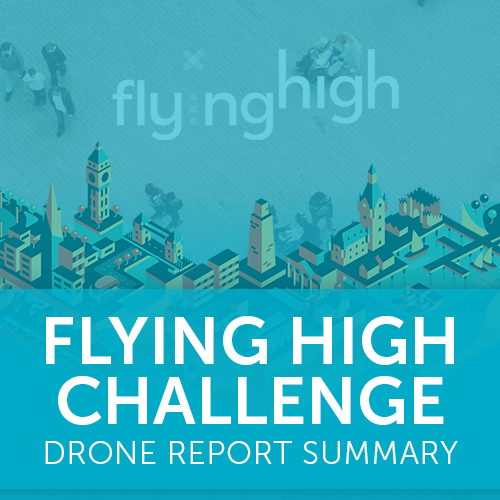
News
Flying High Challenge - Drone Report Summary
Heliguy Insider provides a summary of the Flying High Challenge report from Nesta and Innovate UK which discusses how drones can benefit cities in the UK. ... Read More
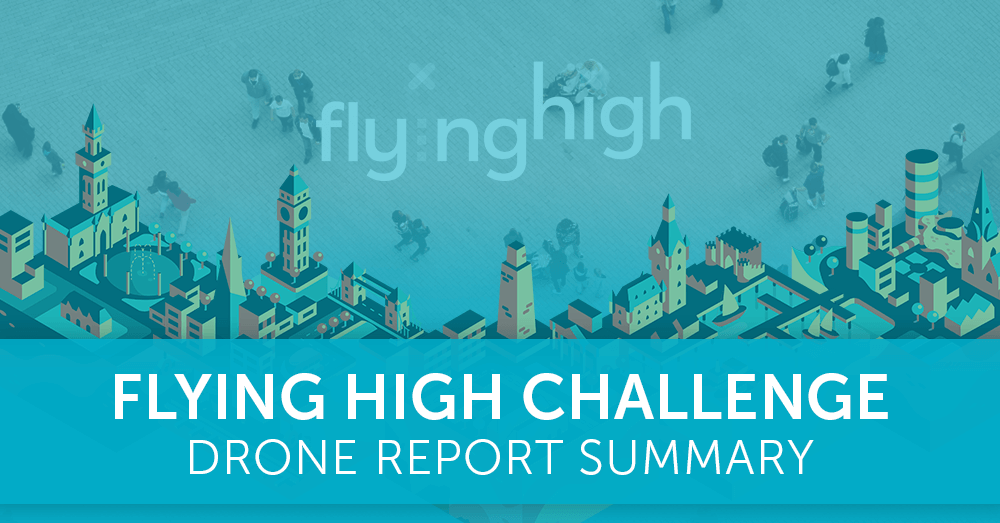
About the Flying High Challenge
Flying High brings together the city leaders, regulators, industries, public services and others from five cities across the UK. Bradford, Preston, London, Southampton and the West Midlands have worked together to create drone use cases in cities and hazardous areas. These cases are being used to evaluate the potential economic and social advantages and disadvantages that drones may bring. The Flying High Challenge was set to cover areas such as drone inspection, monitoring, delivery and intervention. Cooperative feedback is given on each area from the key stakeholders it involves.

"We have a golden opportunity to shape the future of drones in the UK"
Tris Dyson Executive Director - Challenge Prize Centre
The first stage of the challenge took place between February and June of 2018. This first phase aims to assess how drones may fit into the UK’s skies and identify both the possible benefits and challenges they may bring to cities and their residents.
About Nesta and Innovate UK
The Flying High Challenge is delivered through a partnership between Nest and Innovate UK. Nesta – Nesta is a global innovation foundation and UK registered charity who back new ideas to address the challenges faced in the modern world. Innovate UK – Innovate UK is a non-departmental government-funded public body who’s part of UK Research and Innovation. They work to develop economic growth and productivity by supporting businesses in new and exciting areas. Keep reading to find out the details of the initial phase of the report.
Flying High Challenge Report Findings
We have broken down the Flying High Challenge into the five use cases it has developed and the key findings of the report.
Drone Use Cases
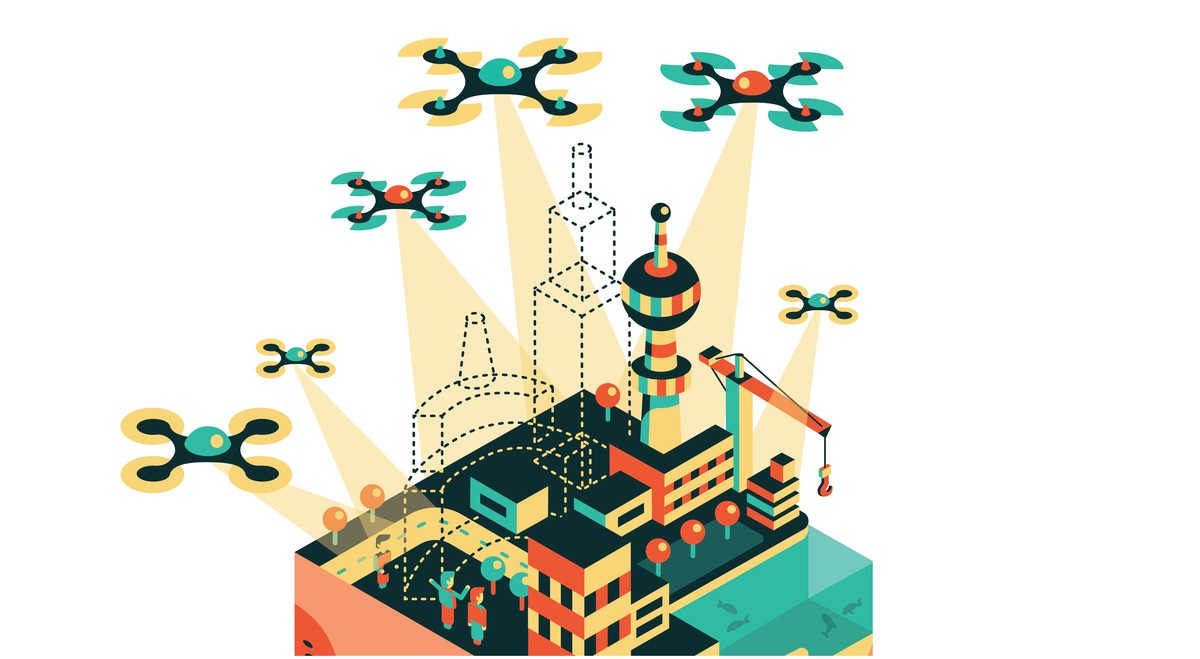
London – Medical Delivery
Within London, a potential drone network could be used to deliver urgent medical materials between a close network of 34 NHS facilities. This would include time-sensitive items such as pathology samples, blood products and equipment. Currently, the traditional delivery methods of these items can be impeded by traffic and the lack of usable road networks. Potential benefits include:
Saving time by avoiding traffic congestion
Reduce traffic congestion
Save money – large-scale service
Increase medical test results
Enhance the efficiency of medical logistics
West Midlands – Traffic Incident Response
In the West Midlands, drones could be used to respond to traffic incidents in order to support the emergency services. Two drones have been suggested, one to provide images of the site quickly for first responders and the second to provide more detailed data. Potential benefits include:
An insight can be provided to emergency services before their on-site arrival to manage resources and response as well as whilst on-site for continued developments
Save time in the reopening of roads by emergency services
Reduce traffic congestion
Preston – Construction and Regeneration
In Preston, drones could be used to assist construction work as part of an urban project as a tool of site surveying and progress updates. A variety of sensors are available including visual, LiDAR and thermal to capture a range of beneficial data. Potential benefits include:
Increases safety for workers
Increase efficiency and site management
A reduction in site waste
Faster incident recovery
Enhanced environmental management
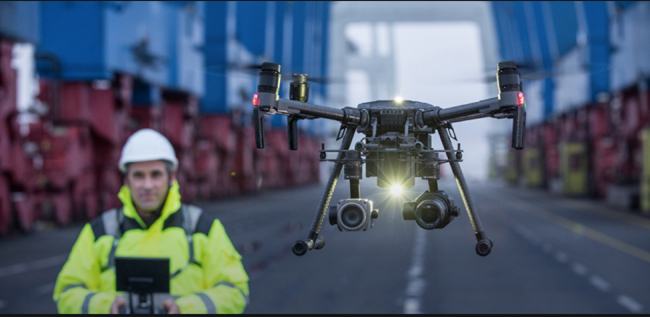
Bradford – Fire and Rescue Support
In Bradford, drones could be integrated into West Yorkshire Fire and Rescue to provide data allowing mission controllers to appropriately respond to an incident. This would allow asset allocation following an alert, leading to a faster and appropriate incident response. Additionally, on-site monitoring could provide vital data on a wide range of potential risk. Like with the West Midlands, two drones have been suggested for rapid response and detailed monitoring. Potential benefits include:
Time-saving – avoiding call outs for false alarms
Cost saving through asset management and by avoiding the use of helicopters
Increase safety for both the public and firefighters
Southampton to Isle of Wight – Medical Delivery
In Southampton, drone feasibility was assessed for drone medical delivery across the Solent to the Isle of Wight. Delivery of a few kilos could be made over 20 miles. Drones offer a faster delivery method compared to the traditional options like ferries, especially for short notice delivery. Potential benefits include:
Time-saving – drones are significantly quicker than traditional delivery methods and offer medical products and results faster
Cost saving
Improve medical logistics by offering service that isn’t currently practicable
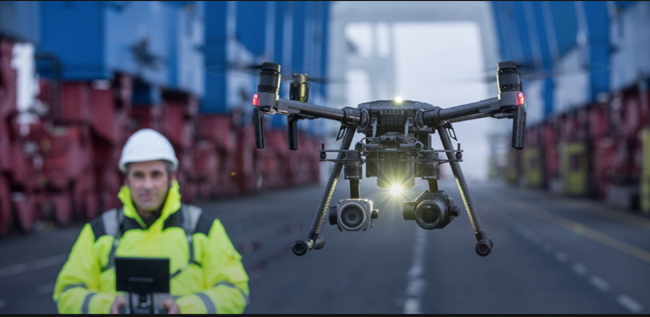
Flying High Report Key Findings
The following are the key findings outlined in the report:
Public confidence is key – the report highlights there has been little conversation with the public on drone use, other than supporting public services. This highlights the importance of keeping the public informed and bringing them into the conversations on drones.
Social and economic impacts vary according to each use case. These can be seen in both their benefits and the scale of the requisite operation.
Regulations need to evolve to allow legal drone operation in each of the cases.
Infrastructure and communications need to be built and developed to encompass drone use.
Developments need to be made with BVLOS flight, a UTM (Unmanned Traffic Management) system, autonomous flight and other areas.
There’s a clear acknowledgement that public authorities can save money and enhance their service through the use of drones.
There’s also note that the US, EU and Singapore, as well as other countries, have better developed their regulations to support businesses when compared to the UK. This has been highlighted as a potential threat to drone development. A key recommendation made in the report is to develop regulations to reflect their benefit.
Overall, there’s clear and considerable evidence showing a substantial economic opportunity from drones, but, the project is currently a work in progress with the beginnings of stakeholder coordination.
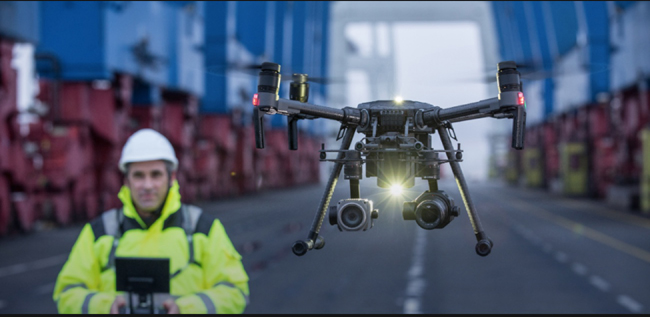
"The Flying High project’s goal will be to help accelerate the use of cutting-edge robotic drone technologies into real-world, complex city environments."
Andrew Tyrer Challenge Director, Robots for a Safer World - UK Research and Innovation
Flying High Challenge – Next Steps
Following on from the report, several Nesta Challenge Prizes have been suggested around the five use cases to take the challenge to the next level. Challenge Prizes are rewards for the first or best organisation to solve a challenge outlined by Nesta. They aim to solve technical problems, bring together and enhance innovators and help unlock systematic change. The following steps have been proposed:
Collaborate with stakeholders to create Challenge Prizes based on the outlined use cases
Invite industries to compete in the Challenge Prizes to develop drones and address the technical and infrastructural challenges for the use cases
Work with regulators to identify how regulations can be adapted and evolved in a quantifiable way
Invite competitors to develop, test and demonstrate their solutions. Tests will take place virtually, in a test scenario and in real-world environments
Engage the public in decision making about the future of drone use
Use the Challenge Prizes process to align stakeholders and develop policy
These steps aim to engage all involved parties offering the best end-results. There’s also no limit set on other cities potentially joining the challenge in similar and new areas in which drones could be seen to be a benefit. The above will be broken down into the following two stages:
Phase two, Engagement and Prize Design will be taking place in 2018 and 2019. This stage will develop the challenge prizes and the testing
Phase three, Challenge Prizes/Demonstrations is expected to take place between 2019 and 2020 to test the new systems
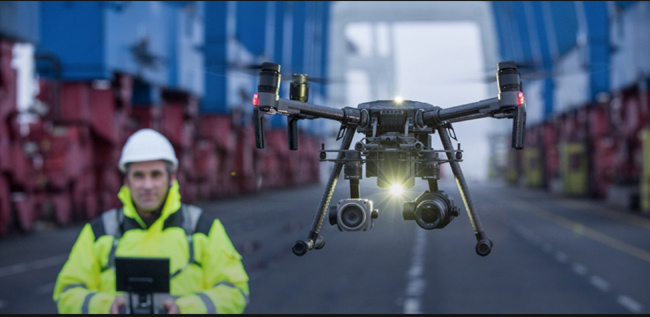
Summary
The Flying High Challenge has identified just a few of the potential benefits drones are able to bring in the UK’s and rest of the world’s future. The five use cases are largely based around public services, a key area drones can benefit to help save lives as well as money. With everyone involved being aligned, from the government and businesses to the general public, it’s likely the transparency will aid the development of the Flying High Challenge. The Flying High Challenge clearly has a huge potential for the UK to lead global drone innovation in which drones could become part of everyday life.
To discuss any information from the above post or any DJI or Freefly product, please give one of our team a call on 0191 296 1024 or email us at info@heliguy.com.
Keep checking back to Heliguy’s Insider Blog for more announcements, insights into drones and, of course, the latest news from the drone industry.
